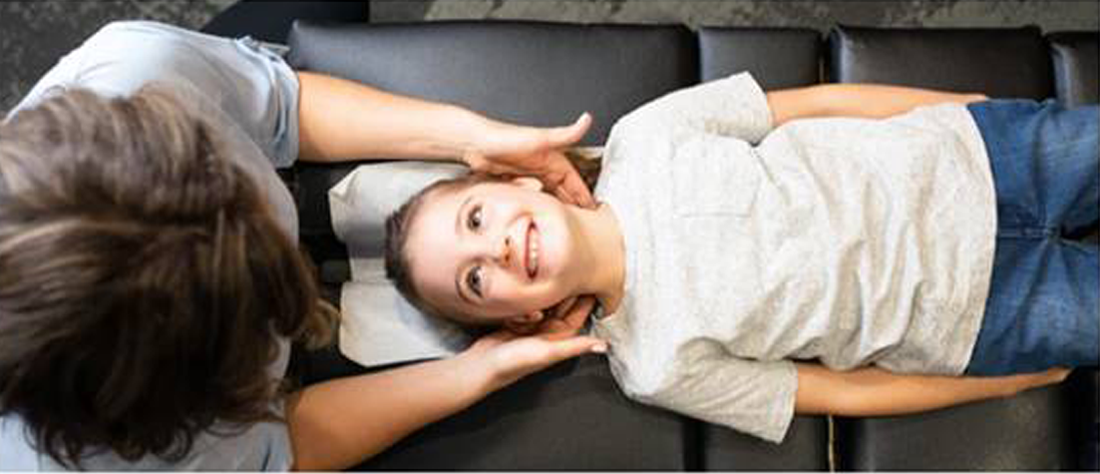Spinal Manipulation vs. Amitriptyline for the Treatment of Chronic Tension-type Headaches: A Randomized Clinical Trial
SOURCE: J Manipulative Physiol Ther 1995 (Mar); 18 (3): 148–154
Patrick Boline, DC, Kassem Kassak, MPH, PhD,
Gert Bronfort, DC, PhD, Craig Nelson, DC,
A.V. Anderson, DC, MD
Funding was provided by:
Foundation for Chiropractic Education and Research (FCER)
This article is reprinted with the permission of National College of Chiropractic and JMPT. Our special thanks to the Editor, Dr. Dana Lawrence, D.C. for permission to reproduce this article exclusively at Chiro.Org
This study compared the effects of spinal manipulation and pharmaceutical treatments for chronic tension headaches. Four weeks following the cessation of treatment, the pharmaceutical group demonstrated no improvement from the baseline. In the spinal manipulation group, headache intensity dropped 32 percent; frequency dropped 42 percent; and there was an overall improvement of 16 percent in functional health status.
Perhaps the best known clinical trial on chiropractic and Tension-type Headaches was the Boline et al study, which compared chiropractic care to the medication amitriptyline. These investigators found that one month of chiropractic care (approximately 2 visits per week) was more effective than amitriptyline for long-term relief of headache pain.
During the treatment phase of the trial, pain relief among those treated with medication was roughly comparable to the chiropractic group. But chiropractic patients maintained their levels of improvement after treatment was discontinued, while those taking medication returned to pretreatment status in an average of 4 weeks after its discontinuation.
(Thanks to Daniel Redwood, DC)This study compared the effects of spinal manipulation and pharmaceutical treatments for chronic tension headaches. Four weeks following the cessation of treatment, the pharmaceutical group demonstrated no improvement from the baseline. In the spinal manipulation group, headache intensity dropped 32 percent; frequency dropped 42 percent; and there was an overall improvement of 16 percent in functional health status.
Background: In the United States headaches are responsible for more than 18 million office visits annually, and are the most common reason for using over-the-counter medications. It is estimated that 156 million work days are lost each year because of headaches, translating to $25 billion in lost productivity. Of the categories of chronic headaches, tension-type headaches are most common.
Headaches are commonly treated by chiropractic doctors with spinal manipulation, and several studies have reported good outcomes. These trials however, suffered from either a lack of a control group or inadequate statistical power. The purpose of this randomized clinical trial was to evaluate the effectiveness of spinal manipulation and a common pharmaceutical treatment (amitriptyline) for chronic tension-type headache.
Methods: One-hundred-fifty patients between the ages of 18 and 70 were randomly assigned to receive either six weeks of chiropractic or pharmaceutical treatment which was preceded by a two week baseline period and included a four week, post-treatment follow up period. Main outcome measures were change in patient-reported daily headache intensity, weekly headache frequency, over-the-counter medication usage, and functional health status using the SF-36 Health Survey.
Results: During the treatment period both groups improved at very similar rates in all primary outcomes. Four weeks following the cessation of treatment patients who received spinal manipulative therapy showed a reduction of 32% in headache intensity, 42% in headache frequency, 30% in over-the-counter medication usage and 16% in functional health status. By comparison, patients that received amitriptyline showed no improvement or a slight worsening from baseline values in the same outcome measures. The group differences at four week post-treatment follow up were considered to be clinically important and statistically significant. There is further need to assess the effectiveness of spinal manipulative therapy beyond four weeks and to compare spinal manipulative therapy to an appropriate placebo such as sham manipulation in future clinical trials.
Conclusion: The results of this study show that spinal manipulative therapy is an effective treatment for tension headaches. Amitriptyline was slightly more effective in reducing pain by the end of the treatment period, but was associated with more side effects. Four weeks after cessation of treatment however, patients who received spinal manipulation experienced a sustained therapeutic benefit in all major outcomes in contrast to the amitriptyline group, who reverted to baseline values. The sustained theraputic benefit associated with spial manipulation seemed to result in a decreased need for over-the-counter medication. There is a need to assess the effectiveness of spinal manipulative therapy beyond four weeks and to compare SMT to an appropriate placebo such as sham manipulation in future clinical trials. (see the Problem with Placebo/Shams Page for other issues associated with sham treatments provided in previous studies.)
Key words: clinical guidelines; low back pain; evidence based medicine; systematic reviews
From the Full-Text Article:
INTRODUCTION
There are more articles like this @ our:
Headaches lead to more than 18 million office visits annually in the United States. In 1986, the Nuprin Pain Report showed that 156 million full-time work days are lost each year because of headaches, at an estimated cost of $25 billion in lost productivity [1]. Headaches are also the most common reason for using over-the-counter analgesic medications [2]. Chronic headaches are one of the most common presenting complaints in ambulatory care clinics [2, 3]. Of the two broad categories of chronic headaches, migraine and tension-type, migraine headaches are likely to be more severe and disabling; however, tension-type headaches are more common [3]. A Canadian study showed that among chronic headache sufferers, 14% suffered from migraine headaches and 36% from tension-type headaches, 14% met the criteria for both headache types and the remaining 36% could not be classified [4].
A study of unconventional health care practices indicated that headaches are commonly treated by chiropractors [5]. Several studies without control groups on spinal manipulative therapy for headaches have reported good outcomes [6-10]. The results of two randomized controlled trials suggested that spinal manipulation may be an effective treatment for both cervicogenic headache and migraine, but both studies suffered from inadequate statistical power [11, 12].
SOURCE: Read the rest of this Full Text article now!





Leave A Comment